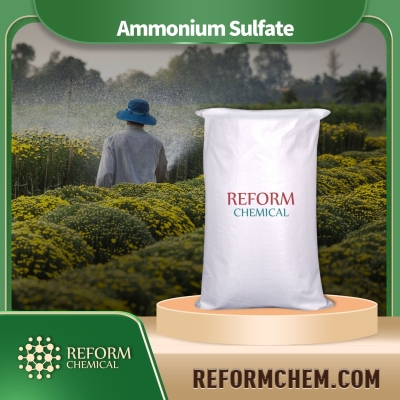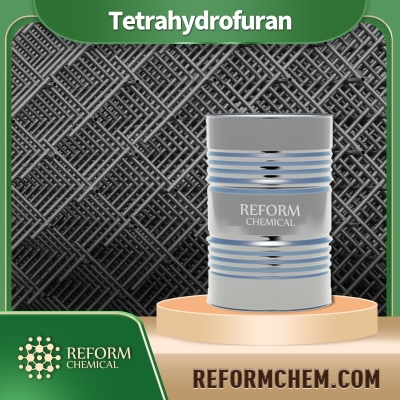-
Categories
-
Pharmaceutical Intermediates
-
Active Pharmaceutical Ingredients
-
Food Additives
- Industrial Coatings
- Agrochemicals
- Dyes and Pigments
- Surfactant
- Flavors and Fragrances
- Chemical Reagents
- Catalyst and Auxiliary
- Natural Products
- Inorganic Chemistry
-
Organic Chemistry
-
Biochemical Engineering
- Analytical Chemistry
-
Cosmetic Ingredient
- Water Treatment Chemical
-
Pharmaceutical Intermediates
Promotion
ECHEMI Mall
Wholesale
Weekly Price
Exhibition
News
-
Trade Service
How to avoid the misuse of highly toxic pesticides, reduce human, livestock and poultry poisoning, and reduce the quality of agricultural products and environmental safety risks are always the direction and responsibility of the efforts of pesticide-related departments at all levels
.
In order to further optimize the product structure and improve the quality and safety of agricultural products, since the beginning of this century, China has increased the prohibition of highly toxic pesticides and accelerated the elimination process
.
After nearly 20 years of hard work, the proportion of highly toxic pesticides has undergone a fundamental change, from about 60% of the original proportion to about 3% at present.
The product has a significant effect of low toxicity, and the structure of pesticides is more reasonable.
Poisoning deaths and food safety issues Relieve quickly
.
China’s regulations on the management of highly toxic pesticides appeared in the “Regulations on the Safe Use of Pesticides” jointly promulgated by the Ministry of Agriculture and the Ministry of Health in 1982, stipulating that “highly toxic pesticides are not allowed to be used in vegetables, tea, and fruit trees.
, Chinese medicinal materials and other crops are not allowed to be used for the prevention and control of sanitary pests"
.
In the "Regulations on Pesticide Management" promulgated and implemented on May 8, 1997, it was once again clarified that "highly toxic and highly toxic pesticides shall not be used in vegetables, fruits, tea and Chinese herbal medicine"
.
The newly revised Food Safety Law on October 1, 2015 tightened the policy requirements for highly toxic pesticides, stipulating “accelerate the elimination of highly toxic, highly toxic, and high-residue pesticides” and “prohibit the use of highly toxic and highly toxic pesticides.
It is used for agricultural crops stipulated by the state such as vegetables, fruits, tea, and Chinese herbal medicines.
"Whoever uses highly toxic or highly toxic pesticides illegally can be detained by the public security organs
.
" It can be seen that the management of highly toxic pesticides is becoming more and more stringent
.
The management of toxic pesticides emphasizes the management of highly toxic active ingredients, rather than differentiated management based on the toxicity levels of different preparations.
This is not difficult to draw evidence from China’s relevant regulations on the management of highly toxic pesticides and the announcement of prohibitions and restrictions on the use of highly toxic pesticides over the years.
The management of highly toxic pesticides in foreign countries is different from that in China, and there are no special policies and regulations such as "highly toxic and highly toxic pesticides shall not be used in vegetables, fruits, tea and Chinese herbal medicine".
.
The United States divides pesticides into restricted use pesticides (RUPs) and conventional pesticides (unclassified) based on the potential hazards to the environment and the applicator during use.
The restricted use of pesticides is further divided into product restriction and use restriction.
Qualified professionals apply, and currently there are more than 900 pesticide products restricted to use
.
Highly toxic pesticides can also be used in vegetables and other crops after the residue limits are established in the United States.
For example, methomyl is used in a variety of vegetables and garden crops
.
China has banned 21 kinds of highly toxic pesticides.
In May 2002, the Ministry of Agriculture issued Announcement No.
199, prohibiting the use of 5 highly toxic pesticides such as fluoroacetamide, glycol fluoride, tetramine, sodium fluoroacetate, and tetramine.
Rat agent
.
These five pesticides have never been registered in China, but due to rampant illegal production at that time, which seriously endangered the lives of the people, the Ministry of Agriculture issued an announcement accordingly
.
In April 2003, the Ministry of Agriculture issued Announcement No.
274, revoking the registration of five highly toxic organophosphorus pesticides: methamidophos, methyl parathion, parathion, monocrotophos and phosphoramine
.
In June 2011, the Ministry of Agriculture and other departments jointly issued Announcement No.
1586, further revoking terbuthion, calcium phosphide, magnesium phosphide, zinc phosphide, fenamiphos, methoxin, and methylthion.
10 kinds of highly toxic pesticides, including thiolinphos, cymaphos, and pyraphos, are registered
.
In September 2015, the Ministry of Agriculture issued Announcement No.
2289, which revoked the registration of chlorhexidine on citrus trees.
As chlorhexidine was only registered on citrus trees, it meant that China banned chlorhexidine
.
So far, 21 kinds of highly toxic pesticides have been banned in China
.
In order to meet the requirements of joining relevant international conventions, China will also ban two highly toxic pesticides, endosulfan and methyl bromide, within 2 to 3 years
.
There are 20 types of highly toxic pesticides allowed in China.
According to existing data and relevant registration information, there are 20 types of highly toxic pesticides still registered in China, including 12 chemical pesticides, 2 biological pesticides, and 6 rodenticides
.
12 highly toxic chemical pesticides
.
In order to achieve the goal of speeding up the elimination of highly toxic pesticides, in recent years, not only has the pace of banning highly toxic pesticides significantly accelerated, the continued use of highly toxic pesticides has also been greatly reduced, and the new registration of highly toxic pesticides has also been stopped
.
The current use of highly toxic pesticides mainly focuses on the control of difficult-to-control crop pests such as underground pests or resistant pests
.
There are currently 12 high-toxic chemical pesticides registered for use (Table 1)
.
.
In order to further optimize the product structure and improve the quality and safety of agricultural products, since the beginning of this century, China has increased the prohibition of highly toxic pesticides and accelerated the elimination process
.
After nearly 20 years of hard work, the proportion of highly toxic pesticides has undergone a fundamental change, from about 60% of the original proportion to about 3% at present.
The product has a significant effect of low toxicity, and the structure of pesticides is more reasonable.
Poisoning deaths and food safety issues Relieve quickly
.
China’s regulations on the management of highly toxic pesticides appeared in the “Regulations on the Safe Use of Pesticides” jointly promulgated by the Ministry of Agriculture and the Ministry of Health in 1982, stipulating that “highly toxic pesticides are not allowed to be used in vegetables, tea, and fruit trees.
, Chinese medicinal materials and other crops are not allowed to be used for the prevention and control of sanitary pests"
.
In the "Regulations on Pesticide Management" promulgated and implemented on May 8, 1997, it was once again clarified that "highly toxic and highly toxic pesticides shall not be used in vegetables, fruits, tea and Chinese herbal medicine"
.
The newly revised Food Safety Law on October 1, 2015 tightened the policy requirements for highly toxic pesticides, stipulating “accelerate the elimination of highly toxic, highly toxic, and high-residue pesticides” and “prohibit the use of highly toxic and highly toxic pesticides.
It is used for agricultural crops stipulated by the state such as vegetables, fruits, tea, and Chinese herbal medicines.
"Whoever uses highly toxic or highly toxic pesticides illegally can be detained by the public security organs
.
" It can be seen that the management of highly toxic pesticides is becoming more and more stringent
.
The management of toxic pesticides emphasizes the management of highly toxic active ingredients, rather than differentiated management based on the toxicity levels of different preparations.
This is not difficult to draw evidence from China’s relevant regulations on the management of highly toxic pesticides and the announcement of prohibitions and restrictions on the use of highly toxic pesticides over the years.
The management of highly toxic pesticides in foreign countries is different from that in China, and there are no special policies and regulations such as "highly toxic and highly toxic pesticides shall not be used in vegetables, fruits, tea and Chinese herbal medicine".
.
The United States divides pesticides into restricted use pesticides (RUPs) and conventional pesticides (unclassified) based on the potential hazards to the environment and the applicator during use.
The restricted use of pesticides is further divided into product restriction and use restriction.
Qualified professionals apply, and currently there are more than 900 pesticide products restricted to use
.
Highly toxic pesticides can also be used in vegetables and other crops after the residue limits are established in the United States.
For example, methomyl is used in a variety of vegetables and garden crops
.
China has banned 21 kinds of highly toxic pesticides.
In May 2002, the Ministry of Agriculture issued Announcement No.
199, prohibiting the use of 5 highly toxic pesticides such as fluoroacetamide, glycol fluoride, tetramine, sodium fluoroacetate, and tetramine.
Rat agent
.
These five pesticides have never been registered in China, but due to rampant illegal production at that time, which seriously endangered the lives of the people, the Ministry of Agriculture issued an announcement accordingly
.
In April 2003, the Ministry of Agriculture issued Announcement No.
274, revoking the registration of five highly toxic organophosphorus pesticides: methamidophos, methyl parathion, parathion, monocrotophos and phosphoramine
.
In June 2011, the Ministry of Agriculture and other departments jointly issued Announcement No.
1586, further revoking terbuthion, calcium phosphide, magnesium phosphide, zinc phosphide, fenamiphos, methoxin, and methylthion.
10 kinds of highly toxic pesticides, including thiolinphos, cymaphos, and pyraphos, are registered
.
In September 2015, the Ministry of Agriculture issued Announcement No.
2289, which revoked the registration of chlorhexidine on citrus trees.
As chlorhexidine was only registered on citrus trees, it meant that China banned chlorhexidine
.
So far, 21 kinds of highly toxic pesticides have been banned in China
.
In order to meet the requirements of joining relevant international conventions, China will also ban two highly toxic pesticides, endosulfan and methyl bromide, within 2 to 3 years
.
There are 20 types of highly toxic pesticides allowed in China.
According to existing data and relevant registration information, there are 20 types of highly toxic pesticides still registered in China, including 12 chemical pesticides, 2 biological pesticides, and 6 rodenticides
.
12 highly toxic chemical pesticides
.
In order to achieve the goal of speeding up the elimination of highly toxic pesticides, in recent years, not only has the pace of banning highly toxic pesticides significantly accelerated, the continued use of highly toxic pesticides has also been greatly reduced, and the new registration of highly toxic pesticides has also been stopped
.
The current use of highly toxic pesticides mainly focuses on the control of difficult-to-control crop pests such as underground pests or resistant pests
.
There are currently 12 high-toxic chemical pesticides registered for use (Table 1)
.






